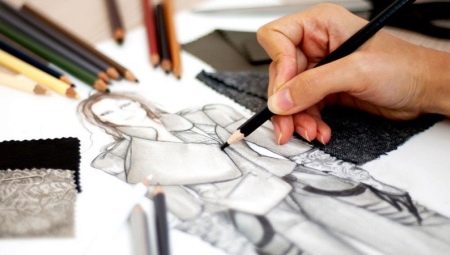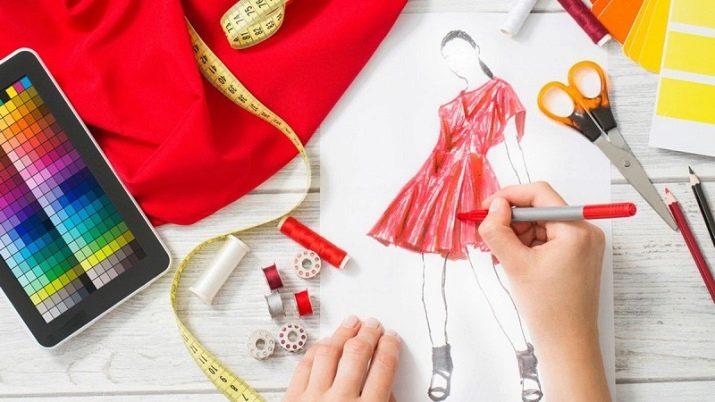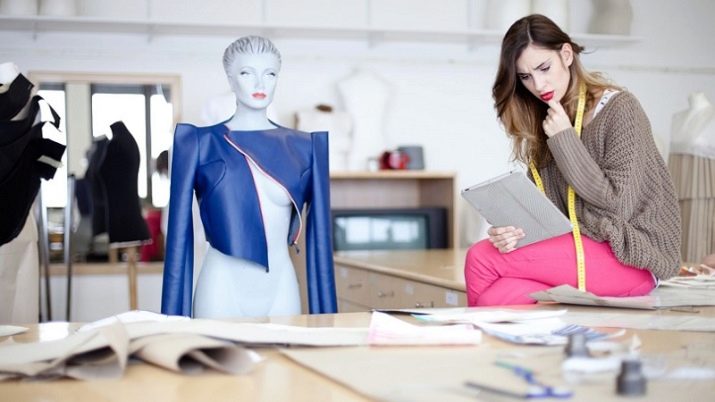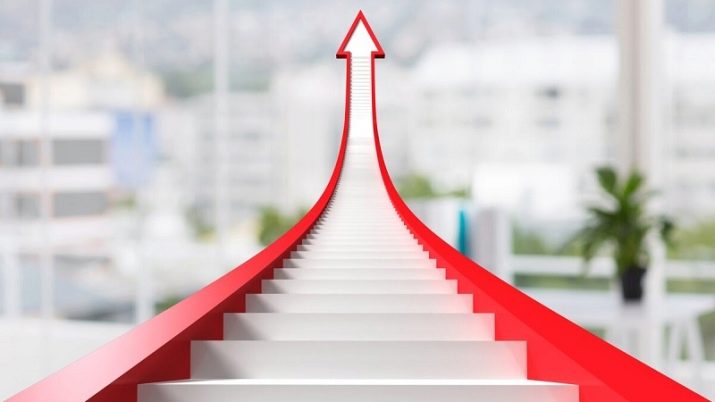Fashion Designer: Characteristics, Duties and Career

A fashion designer is a specialist who develops new models of clothes, shoes, accessories, hats. In the production of these products, the designer-designer is a key figure. The fit of the thing, its relevance, compliance with consumer demand depend on his patterns.
Experts believe that a modern fashion designer-constructor should be an innovator, a person with flexible thinking, listening to fashion and actively interested in new technologies.

Features of the profession
Once a fashion designer was a specialist combining several professional directions at once - he was considered both an artist and a cutter and a tailor. Over time, the so-called stratification occurred, and the tasks of the designer narrowed down. For example, an artist (designer) focused on analyzing fashion trends, generating ideas and forming sketches.
Specifically, the designer is engaged in the development of drawings, he covers a combination of the technical and aesthetic sides of the issue. The technologist is engaged in the processing of fabrics, production optimization, sewing methods. And these specialists usually work in a group, form together new fashion collections.
A fashion designer usually works with a ready-made sketch, which was created by the designer. Simply put, he must process the creative idea of his colleague, making a real thing out of the idea, technically optimally approaching this solution. The designer determines which fabric to use for a particular model, works on patterns and patterns, and offers various options for execution.
This description says that it is technical work, but not without creativity... And it certainly requires special education and the development of certain skills. Such a person must also master computer programs that help in work and optimize the production process. Each sketch must be transformed by a fashion designer, presented in figures and drawings, which requires deep and systematic knowledge.

Responsibilities
There are several segments of the designer-constructor's functionality, without which it is impossible to imagine his work. One way or another, they are spelled out in the job descriptions. Consider Oresponsibilities of a fashion designer.
- Practical design. It's not about the trivial ability to design patterns. The designer must implement models that will be in commercial demand. This requires a specialist to be able to analyze design systems, compare them, and apply current modeling methods. And this is all taking into account the properties of fabrics and finishes. A competent specialist owns 4-5 design systems, and does not stop at one of them.
- Drawing up technical schemes. A sketch is just an idea, an artistic sketch that cannot be sent to production. The technical diagram is already a detailed drawing with proportions and details. The technical scheme is calculated, measured, translated (dimensions - real scale). And according to this scheme, clear drawings and patterns are made.
- Design, working with proportions. Virtually anyone can learn the basics of design, if in principle they are ready to learn. To instill in oneself an artistic taste is a more complicated matter, requiring not only self-discipline, work with different resources, but also based on the natural inclinations of a person. A good fashion designer is not just a "techie", he is a person with a developed artistic vision, who knows how to combine this vision with outstanding technical thinking.
- Working with the layout. The process of creating new forms and models cannot be complete without this. Working with new shaped lines and new material, the quality of which the designer has not yet fully studied, requires the use of a model.
- Creation of patterns. This is probably the main functionality of the constructor. The patterns are based on the technological strategy of tailoring.
- Work in automation mode... Behind it lies the saving of time and effort, as a result, the automation of production. Old school people may be skeptical about automation, but this is nothing more than a defensive reaction. Without innovations, technological and production processes freeze and cease to be competitive.
In addition, the designer-designer often has to agree on the terms of reference with the customer, control the phased production of each part, participate in fittings, study the properties of new materials, etc.
The job descriptions prescribe everything that a fashion designer will do at a new workplace. And these points need to be looked at carefully.

Necessary qualities
They cannot be written in a strict document, but the profession is based on them. For example, you will not see the ability to think outside the standard in the list of job descriptions. But in the request of a company that is looking for a fashion designer, such requirements may well be spelled out. And this is really not a groundless request. The designer is looking for an idea, and the designer is implementing it, and for this, out-of-the-box thinking, creative search, and a willingness to experiment are also necessary.
What other qualities will a fashion designer need to build a successful career?
- Initiative - this work cannot be routine. If it becomes such, you can forget about professional success. You must be prepared to not only pick up on suggestions from management or colleagues, but also speak up with them.
- Team skills - that is, the ability to work in a team.And this requires a specialist to be organized and responsible, accurate, able to negotiate, be friendly and emotionally labile. You must learn to plan and allocate time resources.
- Practical experience - this is not quite a quality, but this is the background that makes a professional out of a professional, which raises him a notch higher. It is possible and necessary to gain this experience during your student years. And bring successful projects into your portfolio, which must be managed competently, responsibly, not without a creative approach.
- Willingness to learn - technological concepts, fashion itself, business conduct are changing. And if you, as a specialist, are flexible to these changes, are ready to accept them and learn new things, it will certainly move you forward in your career.
The profession of a fashion designer is suitable for people with artistic taste, imagination and creative thinking. If a person is sociable and loves communication, creative unions, this profession is also suitable for him.
An innovative look at seemingly ordinary things is an excellent starting "setting" for a future good fashion designer. And if you still have developed coordination and an enviable eye, this increases your chances of building an excellent career.

Education
There are a lot of educational institutions that can make a fashion designer, a sewing product technologist out of a yesterday's schoolboy. You can study closer to your place of residence, choosing not the most popular educational institutions, but affordable ones. Or, while still a schoolboy, you can take a closer look at eminent universities, the very end of which already at the start adds points to you as a specialist.
Among such establishments, we note the following.
- Institute of Social and Humanitarian Technologies MGUTU. Here you can get your Bachelor's degree in Fabric Sewing Design.
- Russian State University named after A. N. Kosygin. You can come out of its walls as a specialist who knows everything about the artistic design of a costume or textiles.
- Moscow State Institute of Culture, where you will receive a diploma in Costume Design.
- Nevsky Institute of Design (St. Petersburg), specialty "Costume Design".
You can often hear the question from applicants about whether it is difficult to study to be a fashion designer. The creative appeal of the profession is deceptive in the sense that it seems that it will be entirely a flight of thought, drawing, creating projects. But study involves the study of technical disciplines and other not very simple subjects, including materials science, sketch and technical drawing, plane and volumetric modeling, the use of IT programs. Therefore, if you are not friends with mathematics, you will either have to fall in love with this subject, or think about choosing another specialty.

Career
The highest point of career development is probably the creation of a private business. It's difficult to start your own business, you also need to be a good marketer and have a business mindset, but with successful collaboration with other specialists, the business can be a great idea with excellent implementation. For some fashion designers, teaching is also considered an excellent career path, and these professionals usually combine practice and teaching.
You can work for a long time as a designer in a team of the same specialists, or you can become a leading fashion designer. Happy choice!









